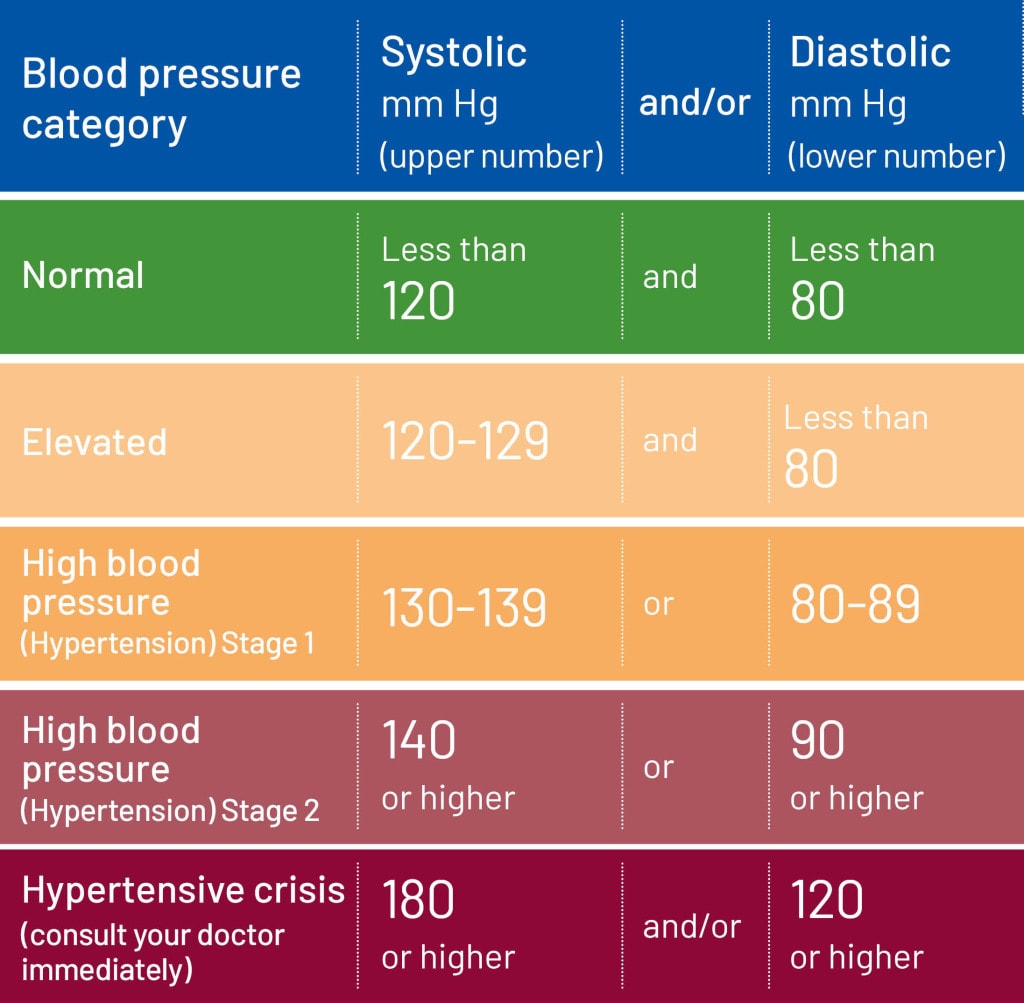Know your blood pressure numbers for a healthy heart
[3 MIN READ]
In this article:
-
What your blood pressure numbers mean, and when it might be time for a diet or lifestyle change.
-
High blood pressure can lead to a lot of other health issues.
-
Providence physicians share strategies for prevention and steps you can take to improve your blood pressure.
There are many numbers to know relating to health, including blood pressure numbers. Although we know it is important, it can be challenging and even a bit confusing to understand what it all means. In a country where 1 in 3 adults has high blood pressure, it is crucial to know and understand your ideal numbers.
Your blood pressure numbers translate the condition of your heart and overall health, so knowing your numbers can make a significant difference in your daily life and longevity. However, knowing your numbers is half the battle. The other half is about knowing what you need to do to live a healthy lifestyle.
How to read your numbers
Blood pressure is a measurement of the force your blood is pushing against the sides of your blood vessels. The correct strength of blood flow (neither too weak nor too strong) is directly related to your heart and vascular health. You can determine your blood pressure health by a series of numbers that fall under one of four major categories: normal, elevated, hypertension stage 1, hypertension stage 2 and hypertensive crisis.
When your blood pressure is tested, your doctor will record your blood pressure as a ratio or fraction. The top number (the numerator) represents your “systolic” pressure, which is the pressure when your heart contracts, or beats. The bottom number (denominator) is “diastolic” pressure, which is the pressure when your heart muscle rests in between beats. Your blood pressure numbers are measured in millimeters of mercury or mm Hg.
The American Heart Association has determined the following guidelines to gauge your blood pressure health:

There are a variety of factors that go into determining your healthy heart numbers. Depression is one of the leading causes of high blood pressure that impacts the health of your heart.
What your blood pressure numbers mean
Normal
If your numbers fall into the normal range, congratulations! You are likely practicing a healthy lifestyle, consuming a healthy diet, or come from healthy genetics. Keep a good eye on your numbers, though, and remember that risk increases with age, so it is important to maintain these heart-healthy habits through the years and continue to get checked.
Elevated
Prehypertension is a warning stage, letting you know that it is time to monitor your heart-healthy habits more closely. If your numbers are greater than 120/80 mm Hg, then you are at an increased risk for hypertension.
Hypertension Stage 1
Hypertension is the medical term for high blood pressure. If your numbers qualify you to be in the Stage 1 Hypertension stage, it is advised to develop a healthy diet and lifestyle changes, and discuss with your doctor ways to improve.
Hypertension Stage 2
Those whose numbers fall into the Stage 2 category should be taking serious precautions to monitor their heart health. Diet and lifestyle changes should be in place, and the condition discussed with a health professional to determine other medical treatments available.
Hypertensive Crisis
Those whose numbers fall into the crisis category should consult their doctor immediately.
What normal numbers look like based on age and gender
The American Heart Association has established normal range considerations that are commonly referred to in regards to blood pressure numbers. However, like most health measurements, the numbers can differ based on age and gender. As a general rule, the AHA considers an optimal range to be at or less than 120/80 mm Hg for adults. There are gender differences in maintaining a healthy heart. For men, high blood pressure increases around age 45, and women are considered more susceptible to develop high blood pressure after age 65.
Although high blood pressure is more commonly found in adults, children are also at risk of hypertension. For every 100 children, approximately five have elevated blood pressure numbers. Although there isn't one cookie-cutter blood pressure reading that indicates high blood pressure for children of all ages, there are guidelines to help determine if you or your children are in the healthy and normal range.
- Age 1 to 3: 80/34 to 120/75 for a male and 83/38 to 117/76 for a female.
- Age 4 to 6: 88/47 to 128/84 for a male and 88/50 to 122/83
- Age 7 to 10: 92/53 to 130/90 for a male and 93/55 to 129/88
Having normal blood pressure means that glucose, amino acids, and many other precious nutrients can be efficiently carried through your bloodstream on a daily basis from the heart to the body's tissues. Having high blood pressure can damage your arteries, heart, brain, and kidneys so it is important to know your numbers and invest in a lifestyle that ensures heart health and longevity.
Your blood pressure numbers can be improved by making healthy diet and lifestyle changes.
--
Find a doctor
If you are concerned about your blood pressure or are looking to get it checked, see your doctor as soon as possible. Providence has a renowned team of cardiologists and general practitioners. Find the physician that's right for you in our provider directory. Through Providence Express Care Virtual, you can also access a full range of health care services.
This information is not intended as a substitute for professional medical care. Always follow your healthcare professional's instructions.